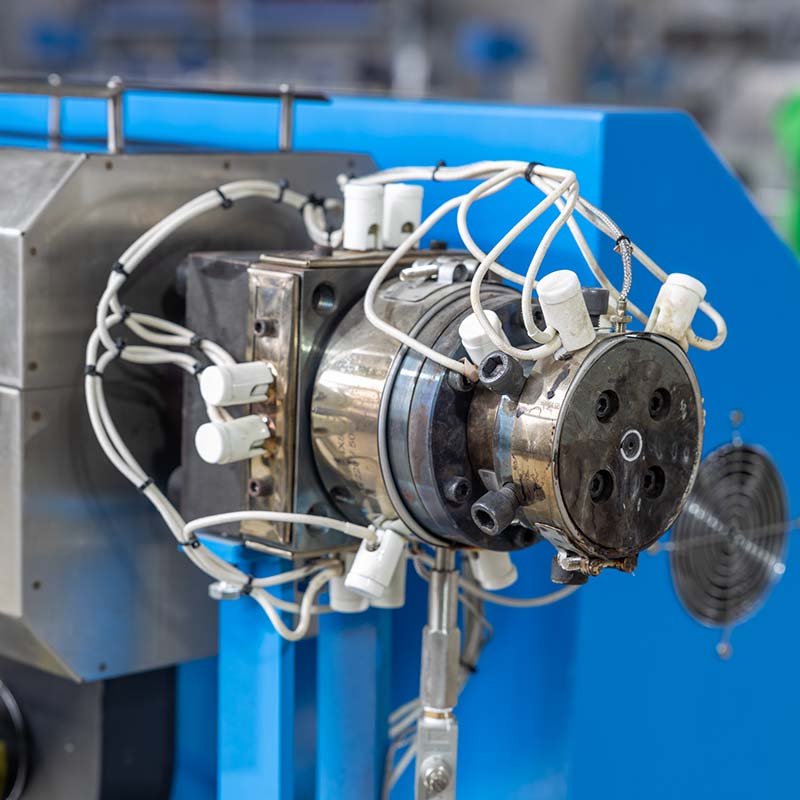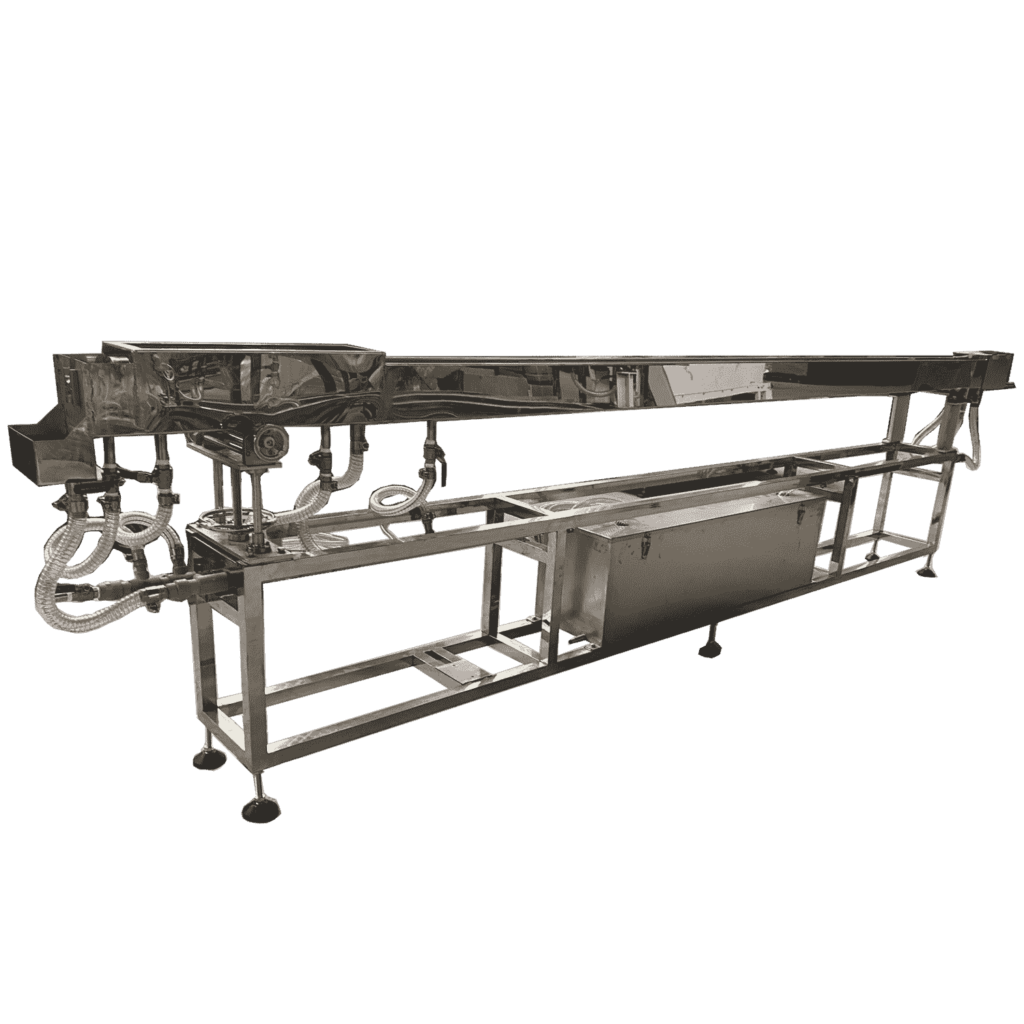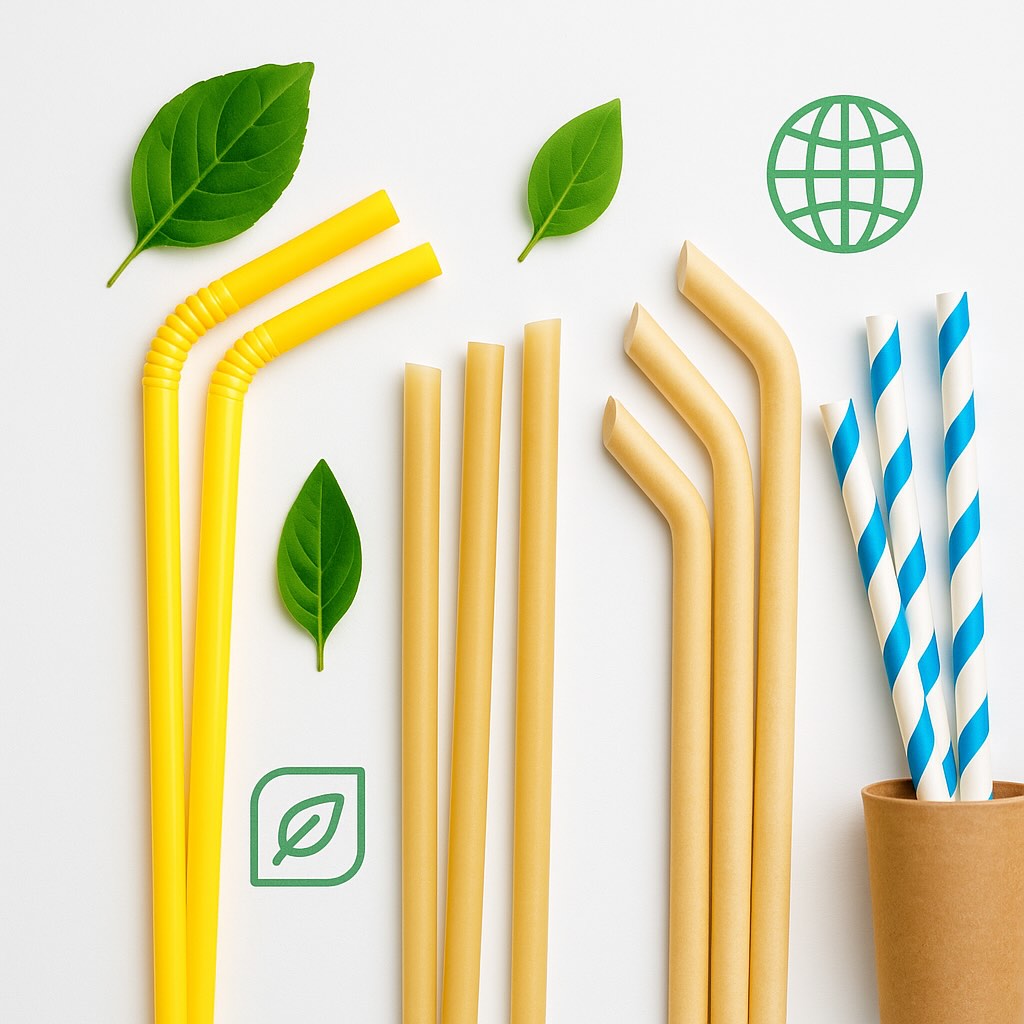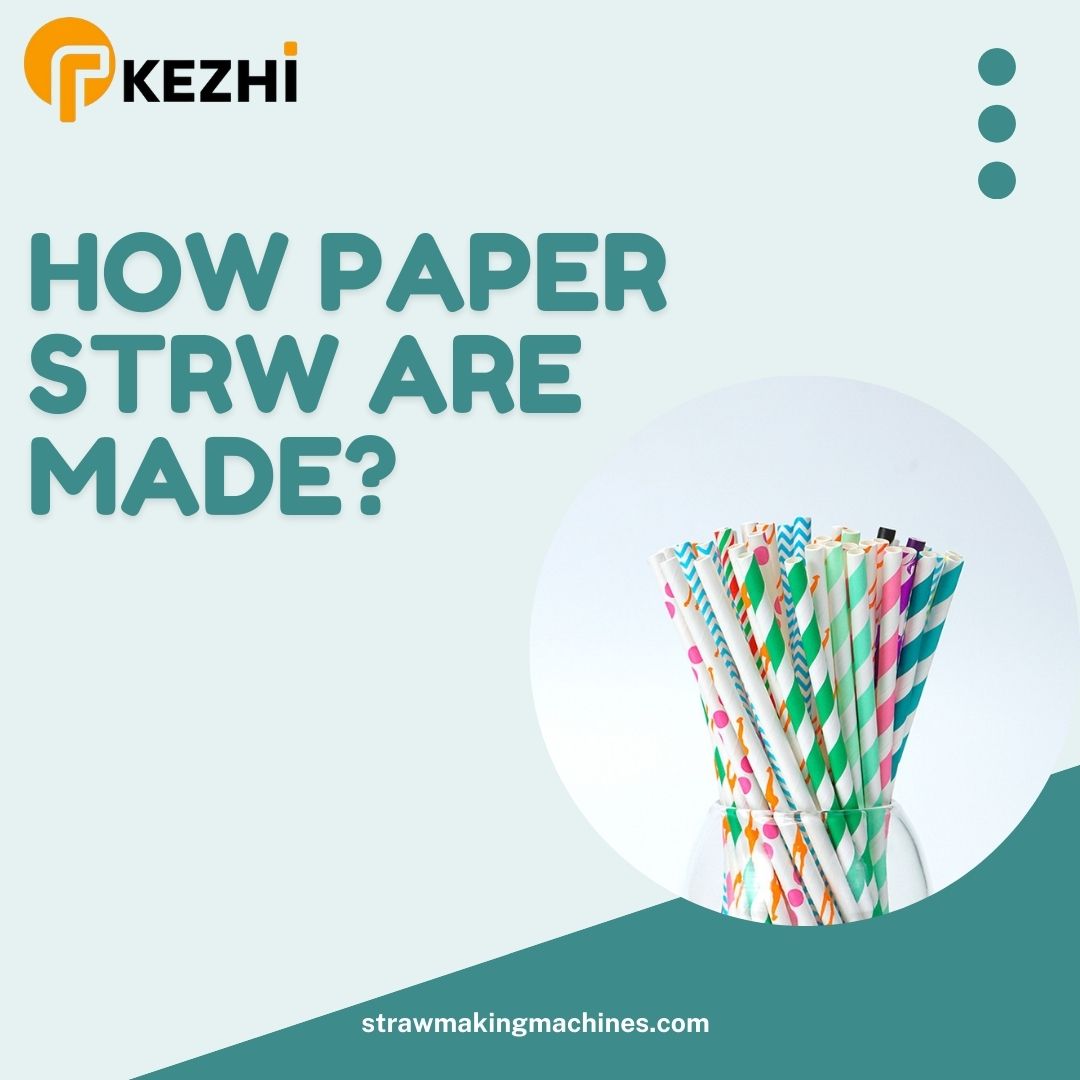The production of plastic and paper straws not only involves distinct materials but also fundamentally different manufacturing processes and environmental considerations. As global demand shifts toward sustainable solutions, understanding the differences between plastic and paper straw making machines has become crucial for manufacturers. Let’s break down these differences in detail.
Manufacturing Processes
Plastic Straw Making Machines

The production of plastic straws follows a streamlined, highly efficient process that utilizes advanced machinery. Plastic straw making machines are designed to handle large volumes and produce consistent, durable straws. Below is a detailed overview of the key steps in the process.
Step-by-Step Manufacturing Process
- Подготовка на материала
The process starts with plastic pellets, typically made from materials like polypropylene (PP) or more sustainable options such as polylactic acid (PLA). These pellets are fed into the machine’s hopper, where they are melted to begin the straw-forming process.
- Extrusion
The melted plastic is processed using an extrusion system. Inside the extruder, a screw mechanism heats and melts the plastic pellets uniformly, ensuring a smooth mixture. The molten plastic is then forced through a die (mold) that shapes it into long, continuous tubes—this forms the basis of the straws.

- Cooling
Once the plastic exits the die, it enters a cooling water tank. Here, the continuous plastic strand is cooled down to solidify its shape. This step is crucial to maintaining the structural integrity of the straws.

- Pulling
A high-speed tractor or puller grabs the solidified plastic tube and pulls it steadily from the cooling tank. This equipment ensures a consistent feed rate, preventing deformation or warping as the straws are formed.
- Cutting
After the plastic tube is formed and cooled, it is cut into individual straws using an automated cutting machine. The cutting machine is adjustable, allowing manufacturers to produce straws in various lengths and sizes with precision and uniformity.
- Packaging
Finally, the cut straws are collected and packaged. Automatic packaging machines can bundle the straws into single or multi-piece sets for easy distribution. This step completes the manufacturing process, preparing the straws for shipping and sale.

Additional Considerations
Customization Options
Plastic straw making machines offer high levels of customization. Co-extrusion techniques allow the production of single-color, double-color, or multi-color straws. This flexibility enables manufacturers to cater to a wide variety of market demands, including color-coded straws for branding purposes or straws with unique designs.
Контрол на качеството
Throughout the production process, rigorous quality control measures are in place to ensure that each straw meets industry standards for durability, safety, and performance. This includes testing the straws for uniformity in size, color consistency, and strength.
Environmental Impact
Despite their durability and versatility, plastic straws have a significant environmental impact due to their non-biodegradable nature. However, some manufacturers are transitioning to biodegradable materials like PLA, which offers a more sustainable alternative. While PLA is compostable in industrial settings, it doesn’t decompose as quickly in natural environments, so the search for eco-friendly solutions continues.
Paper Straw Making Machines

The production of paper straws is more intricate than plastic straws and utilizes spiral winding technology. This process involves multiple layers of paper and adhesive to ensure durability. The key steps in the production process include:
• Cutting the raw paper into strips: Large rolls of Kraft or biodegradable paper are cut into uniform, narrow strips to ensure consistency in the final product.
• Feeding the paper strips: These paper strips are fed into the machine’s brackets, often in multiple layers (usually three to four) to enhance the strength and durability of the straws.
• Gluing the paper strips: The strips are coated with a non-toxic, food-grade adhesive that binds the layers together. This adhesive is critical for making the straws waterproof and sturdy enough to maintain their shape when in use.
• Spiral winding the paper: The glued strips are then wound around a cylindrical mandrel using spiral winding technology. This winding process forms the paper into a tube while giving it structural integrity to withstand liquids.
• Cutting the tube: Once the paper tube is formed, it is cut to the desired length using precision cutting tools. This ensures uniformity in straw length and shape.
Although fully automatic and semi-automatic machines are available, producing paper straws requires careful attention to the quality of the paper and adhesive to ensure the final product holds up under moisture without quickly disintegrating.
Materials Used
Plastic Straws

Plastic straws are generally made from:
- Polypropylene (PP): A flexible and durable plastic derived from petroleum, commonly used due to its low cost.
- Polylactic Acid (PLA): A biodegradable plastic made from fermented plant starch (like corn). Although it’s compostable under industrial conditions, PLA doesn’t break down as easily in the natural environment.
Paper Straws

Paper straws are manufactured from:
- Kraft paper: A strong, biodegradable paper often treated with waterproof coatings or adhesives to improve durability.
- Food-safe adhesives: These are crucial to maintaining the straw’s structure when exposed to liquids and must be non-toxic and environmentally safe.

The materials used in paper straw production are far more environmentally friendly than plastic, breaking down much faster when discarded.
Environmental Impact
Plastic Straws
Despite their durability and low cost, plastic straws have a severe environmental footprint:
- Long decomposition time: Plastic straws can take hundreds of years to decompose, contributing to significant land and marine pollution.
- Energy-intensive production: The production of plastic straws involves high energy use, further exacerbating their negative environmental impact.
- Restricted recyclability: Due to their small size and lightweight nature, plastic straws are difficult to recycle and often end up as waste.

Paper Straws
Paper straws are seen as a greener alternative:
- Biodegradability: Paper straws can decompose in a matter of days, reducing long-term pollution.
- Lower carbon footprint: Producing paper straws typically uses fewer non-renewable resources compared to plastic.
- Challenges: Deforestation and chemical leaching from adhesives can present environmental concerns, but these can be mitigated by using recycled paper and eco-friendly adhesives.
Production Efficiency
Plastic Straw Making Machines
Plastic straw machines are known for their speed and efficiency:
- High output: A single plastic straw machine can produce thousands of straws per hour, making it ideal for large-scale production.
- Customization options: Plastic machines offer greater flexibility in producing different sizes, shapes, and colors, using interchangeable molds and co-extrusion methods.
Paper Straw Making Machines
Paper straw machines are generally slower but still capable of high production rates:
- Moderate output: Modern paper straw machines can produce several thousand straws per hour but tend to be slower than plastic straw machines.
- Higher setup time: Paper straw production involves more intricate setups, including adjusting for paper thickness, adhesive type, and drying time, all of which can slow down the process.
- Maintenance: Due to the nature of paper production, machines may require more frequent cleaning and maintenance to ensure optimal performance.
Customization and Flexibility
Plastic Straw Machines
- Wide variety: Plastic straw machines allow for extensive customization, including producing straws in multiple colors, sizes, and shapes through co-extrusion techniques.
- Durability: Plastic straws retain their shape and functionality even when exposed to liquids for extended periods, making them more reliable for heavy-duty applications like milkshakes or slush drinks.
Paper Straw Machines
- Design options: Paper straw machines can print logos, patterns, and colors directly onto the straws, making them highly customizable in terms of appearance.
- Structural limitations: Paper straws are less durable than plastic, particularly in liquids, where they tend to become soggy after prolonged use. This limits their application in certain industries.
Cost and Investment
Plastic Straw Machines
- Lower material costs: Plastic is cheaper to source, and the high output of plastic machines makes them more cost-effective for mass production.
- Lower initial investment: The cost of plastic straw making machines is generally lower, providing a quick return on investment, especially for high-volume producers.
Paper Straw Machines
- Higher material costs: Paper and food-safe adhesives are more expensive than plastic, driving up production costs.
- Higher machine costs: Paper straw making machines tend to be more expensive due to the complex winding and adhesive processes they must perform, as well as higher maintenance costs.
Regulatory Considerations
With the growing movement toward banning single-use plastics, many regions are implementing regulations that limit or outright ban plastic straw use. This has significantly boosted demand for paper straws, even though they are more expensive and less durable.
- Plastic straw bans: Many countries and cities have banned plastic straws altogether, forcing manufacturers to pivot toward more sustainable alternatives.
- Paper straw compliance: Paper straws comply with these regulations, making them a better option for businesses looking to stay ahead of environmental legislation.
Are you interested?
Contact us to get a one stop solution right now!
Заключение
In the battle between plastic and paper straw making machines, the choice depends largely on the specific needs of the manufacturer. Plastic straw machines offer speed, cost-effectiveness, and durability, making them a great option for mass production where environmental concerns are secondary. On the other hand, paper straw machines align with eco-friendly, sustainable production trends, although they come with higher costs and slower production speeds.
As the world increasingly shifts toward sustainable solutions, paper straw machines are gaining popularity despite their limitations. The decision between plastic and paper comes down to balancing production efficiency, cost, and environmental responsibility—a choice that will define the future of straw manufacturing.
Често задавани въпроси
- What is the lifespan of a paper straw in liquid? Paper straws typically last between 30 minutes to 2 hours in liquids, depending on the paper quality and adhesive used.
- Can plastic straw making machines produce biodegradable straws? Yes, some plastic straw machines can use biodegradable materials like PLA, though these require specific conditions to break down properly.
- Are paper straw machines harder to maintain than plastic straw machines? Yes, paper straw machines generally require more maintenance due to the complexity of the winding and adhesive processes.
- What’s the average production rate for plastic vs. paper straw machines? Plastic straw machines can produce upwards of 10,000 straws per hour, while paper machines typically range from 3,000 to 6,000 per hour.
- Which is more cost-effective: plastic or paper straw machines? Plastic straw machines are generally more cost-effective in terms of production speed and material costs, but paper straw machines are gaining favor due to environmental regulations and consumer demand for sustainability.
Около КЕЖИ
Kezhi е водещ производител, специализиран в проектирането и производството на висококачествени машини за приготвяне на сламки, включително пластмасови, биоразградими и хартиени линии за производство на слама. Със силен r&D team and state-of-the-art manufacturing facilities, KEZHI is committed to delivering innovative, reliable, and efficient solutions to customers worldwide. Our comprehensive range of products, coupled with exceptional after-sales service and technical support, positions us as a trusted partner in the straw manufacturing industry. At KEZHI, we are dedicated to helping our clients succeed by providing tailored solutions that meet their specific needs.






